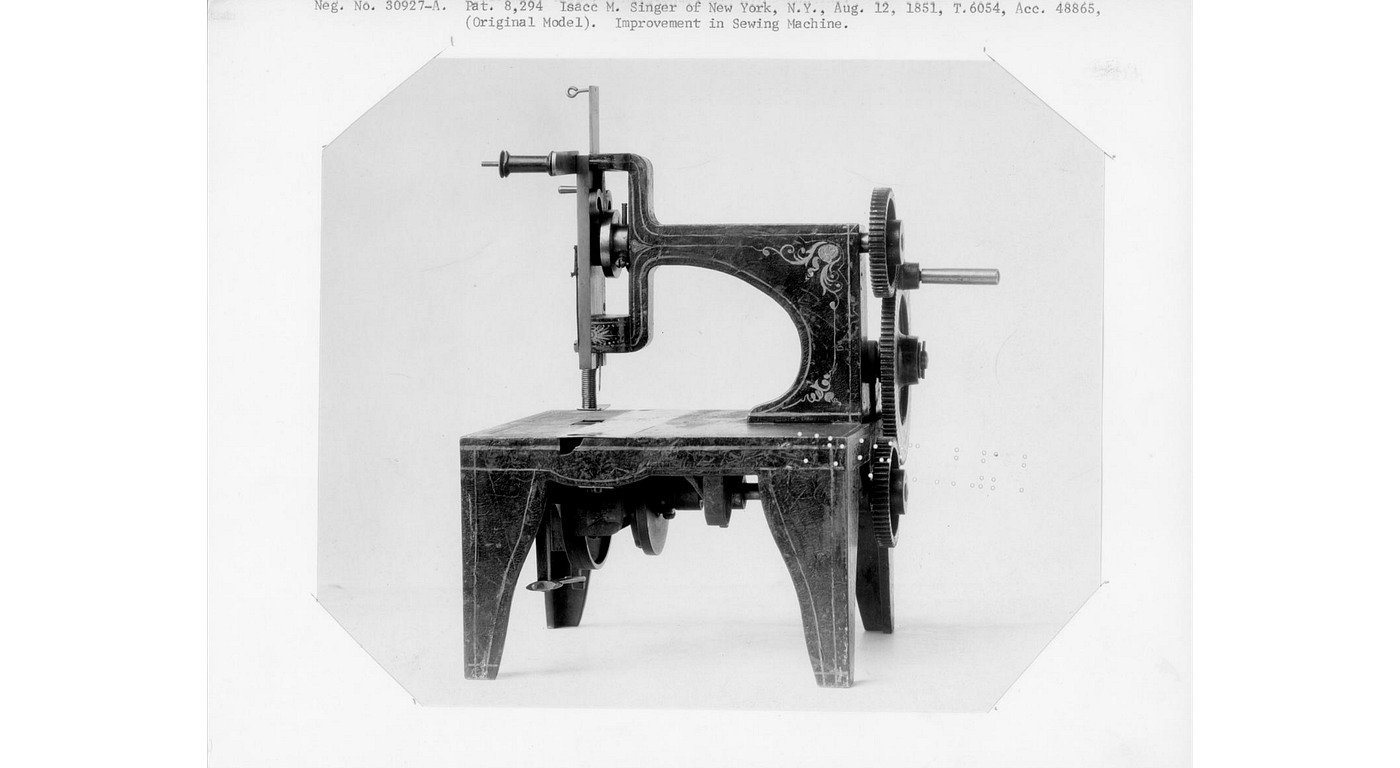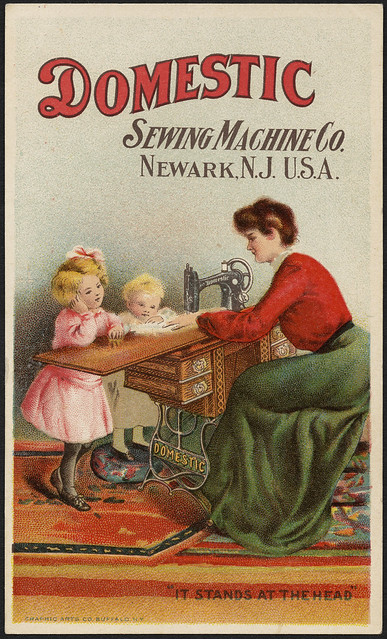The resources I used to learn about my new-to-me Singer.
I love old treadle sewing machines, and I’ve romanticized them since a relatively young age. I’ve been vaguely looking for an antique sewing machine for over a year, and I was picky about it. Once you start looking for them you find them cropping up everywhere, and I allowed myself to be as selective as I wanted.
I didn’t want to pay too much (nor could I). I preferred a pure treadle, not one with power. I wanted to be able to learn on it and maybe even fix it up if necessary, and I really preferred if it was a Singer.
Yesterday we noticed an Estate Sale that was in a temporary space. You know, one of those spaces that often becomes a Spirit Halloween?
We went in and I felt my usual pull towards linens and other cloth when I saw it.

I had been looking at these things long enough to know:
It was a Model 15 Singer
It was in what looked like pretty damn good shape.
At $65 telling myself no was going to be hard.
Of course I bought that Singer.

Sewing machines were the first complex mass-manufactured machine. Isaac Merrit Singer’s ability to market his sewing machine is what cemented its role in part of sewing history.
He’s not the inventor of the sewing machine, or even the inventor of the domestic sewing machine. It’s far more hairy than that.
Like every sewing machine inventor around him at the time, Singer would either have to license or steal the design of the lock-stitch (an invention by Elias Howe) to make his machine happen. The lock-stitch was due to Howe’s innovation of placing the eye of the needle at its point.

Howe was a ‘non-practicing entity’ that was backed by a well-financed business partner. That means — Howe didn’t actually use his patent, he licensed it to others for use, and used the financial resources he had to litigate those he felt infringed it. What happened next, would leave such an impression on Howe who later also filed a patent for “Automatic, Continuous Clothing Closure” (zipper) — but never did anything with it. As a fun pop-up factoid, The Beatles dedicated the movie Help! to him.
Back to our boy Singer. Singer decided to ask for forgiveness rather than permission and stole the whole lock stitch thing and put it into his patent model for his sewing machine. He also threw some other improvements in there — a vertical needle and horizontal working surface,

Singer wasn’t the only one working on the device, and with all of the frenzied development a ‘patent thicket’ developed. A patent thicket, a term that wouldn’t be developed until the 1970’s, is when there’s a bunch of overlapping rights. Innovators are forced to make deals, and in the Sewing Machine Wars, that’s exactly what happened.
In a deal brokered by sewing machine competitor / lawyer Orlando Brunson Potter, the Sewing Machine Combination gave each of the four stakeholders (including Howe and Singer) partial ownership in a patent that combined their concepts into the first ‘patent pool.’ Each of those four stakeholders received a percentage of the earnings of every machine. Three innovations are written about as particularly important: Howe’s lock stitch, the four-motion feed contributed by Wheeler and Wilson, and Singers’s vertical needle / horizontal sewing surface.
But what Singer knew how to do better than any of them, was market them. And — he offered payment plans.
He apparently also knew how to father children because he had 22 of them. Whew.

Anyway, my model of Singer isn’t the first. It’s not rare, or a special version. It’s not overly old. There’s no special, ornate plate. There anything particularly superlative about it other than it’s with me right now, and I adore it.
You might think “Jamie, How can you tell any of this stuff about that thing?” and the answer is you take that Serial Number and head over to the International Sewing Machine Collectors Society webpage. There, you can find the Singer Serial Number Database.
Using that, I could find out that mine was a model 15, and its allotment date (I’m calling it the birth date) was March 27, 1950.
To find out that it was an 88 took a bit more sluething, but it wasn’t difficult. For something so popular and well-known, there’s a lot of material out there. And for the longest time, this sewing machine and others a lot like it reigned supreme.
Basically, the 15–91 uses a potted motor, the 15–89 has a hand crank, and the 15–88 has treadle.
My machine is obviously a 15–88. In the shot below you can see there’s no potted motor, and no hand crank.

Once I popped it open I also realized that this machine was probably either serviced or fully restored — or was close to never used. That thread in the shuttle was my fault! It’s unreal how clean this machine is.

The tension assembly works so perfectly.

I was able to use the Internet Archive to find the manual, which Singer also has on their website. I haven’t found an issue that wasn’t due to my ignorance (or to it needing a bit of oil here and there, which is to be expected. There hasn’t been an issue where someone doesn’t have instructions on how to fix it (or they weren’t already in the manual).

The stitch length is just … there’s no comparison. Modern machines that I’ve had can’t do it.
I’ve already managed to sew through 4 ounce leather, around 6 layers of wool coating — this machine is a champ. I was originally thinking of sewing up the shirt I’ve done all the smocking on by hand — but it might be the perfect time to learn to work with my new lovely lady!
The other advantage? It came with a full complement of feet.

I was delighted to find specific instructions how to use each one in the manual. The inclusion of all these feet make it a a sure thing that this will be my daily use machine.
I’ve sewn a bit on it (a black chemise) and I love working with this machine. It’s quiet and soothing to use, the treadle motion is a lot like my spinning wheel, and it makes it easy to control the machine’s speed. There are a lot of times where I’ve felt confident in working with my other machine, but that confidence seemed to come much more quickly with my new ‘Iron Lady’.
Now, I just have to think of a name.
Sources:
https://slate.com/technology/2013/12/sewing-machine-patent-wars-of-the-1850s-what-they-tell-us-about-the-patent-system.htm
https://www.smithsonianmag.com/smithsonian-institution/how-singer-won-sewing-machine-war-180955919/
https://en.wikipedia.org/wiki/Elias_Howe
